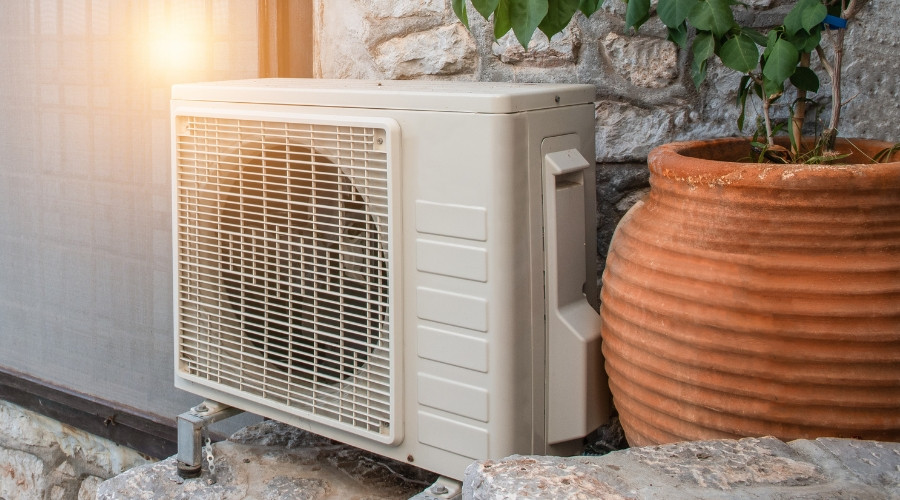Columbia HVAC experts outline heat pump basics, repair signs, and installation tips for year-round comfort.
Columbia, United States - October 30, 2025 / Spring Hill Heating & Cooling /
Heat Pumps Explained
Looking for a smarter path to year‑round comfort and measured energy use? Installing a heat pump combines heating and cooling in one efficient package, often lowering operating costs while simplifying equipment needs. This overview explains how a heat pump system works, compares ducted heat pump and ductless heat pump formats (including mini-split heat pumps), outlines the practical advantages of heat pump installation, and highlights early indicators that call for timely heat pump repair.
What Is a Heat Pump?
A heat pump transfers heat rather than generating it through combustion. In heating mode, the outdoor unit absorbs available heat from outside air and moves it indoors; when cooling is required, the cycle reverses and carries indoor heat outside—much like a conventional air conditioner. Because a single heat pump system provides both functions, many households replace separate furnace and AC equipment with one coordinated solution.
Two main configurations fit most properties. A ducted heat pump integrates with existing ductwork to distribute conditioned air through registers across multiple rooms. A ductless heat pump, also known as a mini-split heat pump, uses compact indoor air handlers mounted in select spaces for zoned comfort without the need for ducts. Both rely on the same refrigerant‑based technology but differ in how air reaches living areas. With proper sizing, placement, and controls, either format can deliver steady temperatures and quiet operation through all seasons.
Benefits of Installing a Heat Pump
 A well‑planned heat pump installation can streamline comfort and reduce day‑to‑day complexity. By moving existing heat instead of producing it from fuel, a heat pump often runs in longer, smoother cycles that help limit temperature swings and mechanical stress. Many homes also benefit from consolidating two separate systems—heating and cooling—into one coordinated platform, which can simplify maintenance routines and free up mechanical space.
A well‑planned heat pump installation can streamline comfort and reduce day‑to‑day complexity. By moving existing heat instead of producing it from fuel, a heat pump often runs in longer, smoother cycles that help limit temperature swings and mechanical stress. Many homes also benefit from consolidating two separate systems—heating and cooling—into one coordinated platform, which can simplify maintenance routines and free up mechanical space.
Flexibility is another advantage. Where ducts are available and in good condition, a ducted heat pump provides familiar whole‑home coverage. In homes where adding or extending ducts would be disruptive, a ductless heat pump is an effective alternative. A mini split heat pump also enables independent zone control, allowing seldom‑used rooms to be set back while primary living spaces remain comfortable. In cooling season, multi‑speed components can improve humidity control; in heating season, inverter‑driven operation commonly provides gentle, even output with fewer on‑off bursts than older equipment.
Practical benefits extend to long‑term planning. A single, modern heat pump system can simplify service schedules, reduce equipment congestion, and maintain reliable comfort across varying weather conditions. When paired with sound building insulation and air sealing, this approach supports efficient and predictable operation without the complexity of juggling multiple, dissimilar systems.
Signs Heat Pump Repair Is Needed
 Like any mechanical equipment, a heat pump occasionally signals trouble before a full failure. New or persistent noises—such as grinding, squealing, or rattling—may indicate worn bearings, loose hardware, or a failing motor and should be assessed promptly for heat pump repair. Short cycling, nuisance breaker trips, or system lockouts can point to control faults, airflow restrictions, or sensor issues that require professional diagnosis.
Like any mechanical equipment, a heat pump occasionally signals trouble before a full failure. New or persistent noises—such as grinding, squealing, or rattling—may indicate worn bearings, loose hardware, or a failing motor and should be assessed promptly for heat pump repair. Short cycling, nuisance breaker trips, or system lockouts can point to control faults, airflow restrictions, or sensor issues that require professional diagnosis.
Performance symptoms matter too. Weak airflow from registers or indoor heads can be traced to a clogged filter, obstructed indoor coil, duct limitations in a ducted heat pump, or blower problems. Uneven temperatures across rooms—or a zone that never reaches setpoint in a mini split heat pump—may suggest an incorrect refrigerant charge, a malfunctioning reversing valve, or misconfigured controls. A steady rise in electricity use without a weather‑related explanation can likewise indicate declining efficiency and the need for inspection.
Mode errors are another red flag. A unit stuck in heating or cooling mode typically points to a reversing valve or control‑board issue. Ice buildup on the outdoor coil beyond normal defrost cycles hints at airflow or refrigerant concerns that should be addressed quickly to protect the compressor. Acting on these signs early helps restore consistent operation, extend equipment life, and prevent no‑heat or no‑cool events during extreme weather.
About Spring Hill Heating & Cooling
Spring Hill Heating & Cooling is a family-owned and operated HVAC company that proudly serves the communities of Columbia and its neighboring areas, offering on-time, same-day service. Call them today to schedule heat pump services in Columbia, TN.

Contact Information:
Spring Hill Heating & Cooling
115 Penny Ave
Columbia, TN 38401
United States
Kaylee Siemiatkaska
(931) 381-2255
https://www.springhillac.com/

